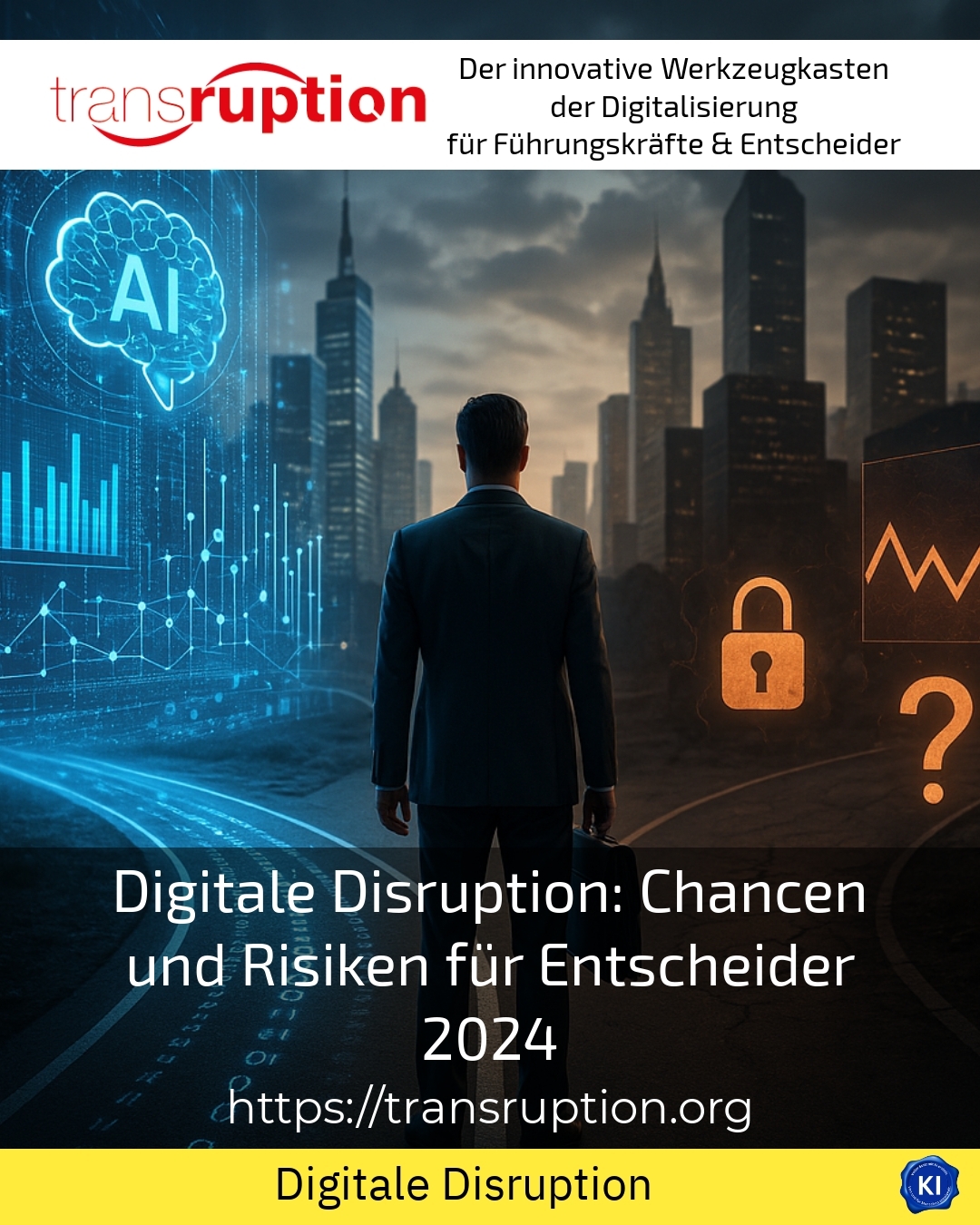Digital disruption** represents a complex challenge for decision-makers in 2025. It brings with it far-reaching changes, but also numerous opportunities. Companies have long felt the pressure to scrutinise their business models, processes and strategies. Only those who actively engage with the dynamics of digital innovations will be able to remain competitive and promote growth in the long term.
The duality of digital disruption: change and opportunity
Digital technologies are rapidly changing customer expectations and market structures. Digital disruption is leading to traditional products and services being scrutinised. For example, the entry of video streaming platforms such as Netflix has fundamentally reshaped the media industry. At the same time, smartphone applications are replacing traditional telephone services and returning the favour with additional services.
Another example is on-demand services such as Uber, which are challenging the taxi industry. The switch from physical products to digital subscription models, for example for software or music, also demonstrates the significant pressure to change. Companies have recognised that they need to take advantage of digital opportunities to avoid becoming victims of this disruption themselves[1][3].
Opportunities for decision-makers through digital disruption
Innovative technologies such as artificial intelligence (AI), big data and the Internet of Things (IoT) are opening up new opportunities for managers. AI supports automation and can speed up complex decision-making processes. For example, logistics companies are optimising their supply chains more efficiently than ever before with AI-based route planning.
In the financial sector, data-driven analysis processes enable a personalised customer approach. The manufacturing industry is also benefiting from smart factories that use networked sensors to improve operating processes and anticipate price fluctuations more quickly.
BEST PRACTICE at the customer (name hidden due to NDA contract)
A medium-sized company in the mechanical engineering sector relied on digital twins and was thus able to forecast maintenance cycles precisely. This significantly reduced downtimes and opened up new service models that led to greater customer satisfaction.
Strategic recommendations for decision-makers
Companies should actively embrace disruptive potential and not just react to changes. This includes systematically consolidating data and utilising it for strategic decisions. The development of new products or business models requires creativity and the courage to question existing market mechanisms.
Greater customer focus, for example by analysing feedback via social media, helps to identify expectations at an early stage and adapt services accordingly. It also shows how important the combination of technological expertise and interdisciplinary collaboration is.
BEST PRACTICE at the customer (name hidden due to NDA contract)
A service company set up an interdisciplinary innovation team. This team developed an app that digitalised internal processes and increased efficiency by over 20 per cent. Combined with regular workshops, new approaches were developed for the further development of the platform.
Risks and challenges of digital disruption
Despite the opportunities, digital disruption also harbours risks that decision-makers must actively counter. Cybersecurity is one of the biggest threats today. Increasing networking increases the attack surface, and AI-driven cyberattacks are gaining in precision and frequency.
Handling sensitive data also requires special attention: data protection and compliance requirements are increasing. Companies that are negligent in this area risk financial and reputational damage.
The rapid pace of change also poses new questions for the labour market. Skills gaps are emerging because not all employees can keep pace with the speed of technological development. Targeted training and retraining programmes are therefore essential for a sustainable HR strategy.
BEST PRACTICE at the customer (name hidden due to NDA contract)
An international retail company launched an upskilling programme in 2025 that taught employees digital skills. This enabled processes to be organised more effectively and motivated employees to actively participate in the digital transformation.
Transruption coaching as a guide through change
Many decision-makers report that they appreciate support in managing their digitalisation projects. Transruption coaching helps them to master the complexity of digital disruption. It helps to analyse individual challenges, assess risks and develop tailor-made solutions.
This coaching approach promotes reflection on corporate goals in the context of digital transformation. At the same time, it strengthens the ability to proactively shape change and take teams along on the journey.
My analysis
Digital disruption is both a challenge and an opportunity for companies worldwide. Decision-makers need to understand the dynamics and actively manage them. The integration of new technologies supports innovation and efficiency, but also requires an awareness of risks such as cyber security and a shortage of skilled labour.
A holistic approach that combines technological, organisational and human aspects is the key to success. At the same time, external support, such as transformation coaching, can provide important impetus to support transformation projects in the long term.
Further links from the text above:
What is Digital Disruption? | Definition from TechTarget
What is Digital Disruption and the Top Five Digital Disruptors
Navigating digital disruption: Balancing innovation and security in 2024
New Report Reveals Digital Disruption and Climate Change as Fastest Growing Risks
What if disruption isn't the challenge, but the opportunity? - EY
For more information and if you have any questions, please contact Contact us or read more blog posts on the topic TRANSRUPTION here.















